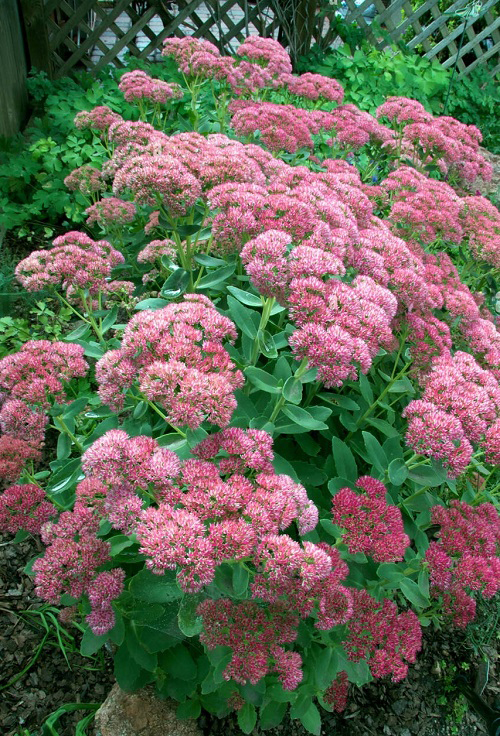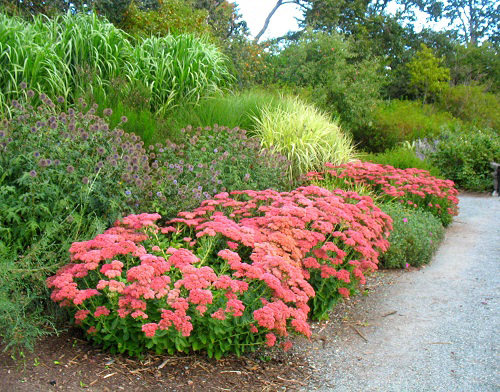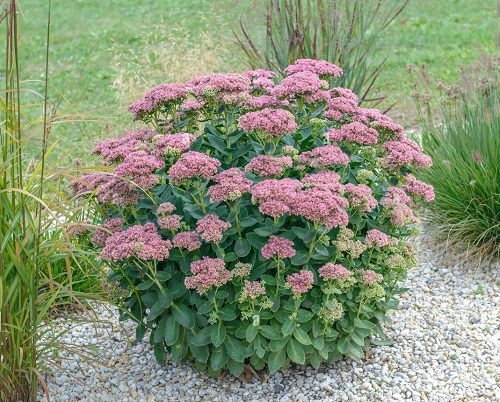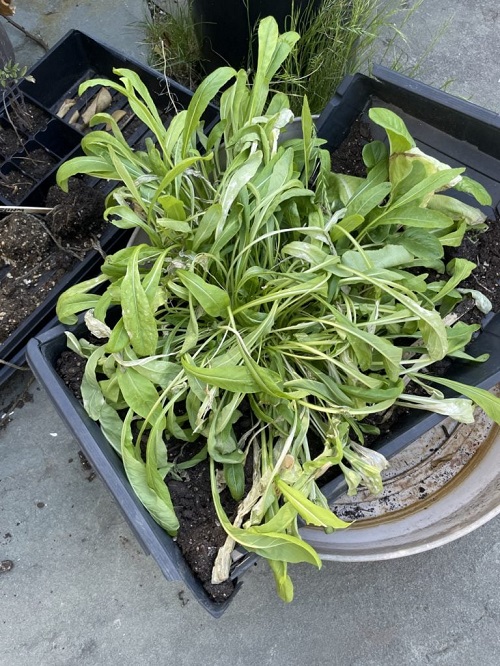Discover the secrets of maintaining a stunning Autumn Joy Sedum plant all season long with exclusive our guide!
This hardy perennial is a favorite among gardeners for its stunning display of pink flowers that bloom late into the fall season. Delve into everything you need to know about Autumn Joy Sedum Care to keep it healthy and vibrant all season long.
Autumn Joy Sedum Plant Information
Autumn Joy Sedum is a hardy perennial that belongs to the Stonecrop family. This popular plant is native to Europe and Asia but has been widely cultivated in North America for decades.
The Autumn Joy Sedum is loved for its attractive appearance and physical characteristics. This plant boasts fleshy, succulent leaves that change from green to gray-green as they mature, forming a clump that grows up to 2 feet tall and 1.5 feet wide.
In late summer and fall, the plant produces large, flat clusters of tiny pink flowers that gradually turn a rusty red, adding a splash of color to any garden. Its easy-to-care-for nature, stunning appearance, and ability to attract pollinators make it a top choice for adding color and texture to any garden or landscape design.
One of the reasons the Autumn Joy Sedum is so popular is its hardiness. This plant is tolerant of a wide range of growing conditions and can thrive in most soil types. Also, the history of the plant is rich and fascinating. This plant has been used for centuries in traditional medicine to treat a range of ailments, from digestive issues to skin problems.
Botanical Name: Hylotelephium telephium (Formerly Sedum telephium)
USDA Zone: 4-11
Other Popular Names: Stonecrop, Showy Stonecrop, and Live-Forever
Here is our Monstera Albo Care and Growing Guide
Growing Autumn Joy Sedum in Pots
Growing Autumn Joy Sedum in pots is a great way to keep it in small spaces like a patio or balcony. You can start the plant in an 8 inches container, which can be good for 1-2 years.
After that, you can re-pot the plant into one size bigger container than the old one.
Requirements for Growing Autumn Joy Sedum
Location
The Autumn Joy Sedum thrives in full sun, so make sure to plant it in a spot that gets at least six hours of direct sunlight each day. If you live in an area with intense heat, a spot that gets partial shade in the afternoon can help protect the plant from sun scorch.
Soil
Autumn Joy Sedum will thrive in a wide range of soil types, including both clay and sandy soils, but prefers well-draining, slightly alkaline soil.
If planting in clay soil, it is important to incorporate organic matter such as compost or peat moss to help improve drainage and aeration.
Watering
While the Autumn Joy Sedum is drought-tolerant, it still needs regular watering to thrive. Water deeply once a week, allowing the soil to dry out between watering sessions.
Overwatering can lead to root rot, so you should keep an eye on the plant and make sure not to water it too frequently.
Temperature and Humidity
The Autumn Joy Sedum is a hardy plant that can tolerate a wide range of temperatures, from hot and dry to cold and wet. It can survive in temperatures as low as -30°F, making it a great option for cold climates.
On the other hand, humidity isn’t a big concern for this plant, as it can thrive in both dry and humid conditions.
Check out Ways To Increase Humidity For Houseplants That Work here
Autumn Joy Sedum Care
Fertilizer
The Autumn Joy Sedum doesn’t require much fertilizer, as it can thrive in nutrient-poor soil. However, if you want to give your plant a boost, you can apply a slow-release fertilizer in the spring.
Be sure not to over-fertilize, though, as this can cause the plant to grow too tall and flop over.
Here is a great Homemade Potassium Fertilizer Recipe
Pruning
Pruning is not necessary for the Autumn Joy Sedum, but it can help promote bushier growth and prevent the plant from becoming too leggy.
Cut back any dead or damaged stems in the spring, and pinch back the tips of the plant in early summer to encourage branching.
Pests and Diseases
The Autumn Joy Sedum is relatively pest and disease-resistant, but there are a few issues to watch out for. Mealybugs and aphids can occasionally infest the plant but can be controlled with insecticidal soap.
Root rot can also be a problem in poorly-draining soil, so be sure to plant your Sedum in soil that drains well.
Powdery mildew can occasionally appear but can be easily prevented by watering at the base of the plant and not overhead.
Sedum Autumn Joy Companion Plants
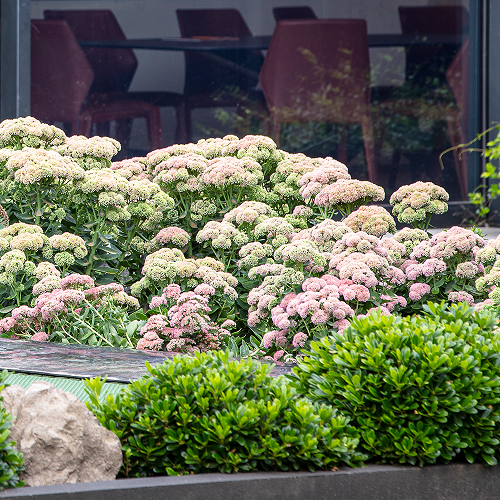
When considering companion plants for Sedum Autumn Joy, there are many great options to choose from.
- One of the best choices would be a colorful combination of annuals, such as petunias, impatiens, and marigolds. These plants will provide a bright contrast to the soft colors of the Sedum and will bloom throughout the late summer and fall when the Sedum is at its peak.
- Ornamental grasses, such as fountain grass and blue oat grass, can also be used to fill in any gaps around the Sedum Autumn Joy. They will add movement and texture to the garden, while also providing a nice backdrop to showcase the Sedum.
- Other perennials, such as asters, coreopsis, and coneflowers, can be used to extend the blooming season when the Sedum is done flowering. These plants will add splashes of color in the late summer and early fall when the Sedum is fading.
- Some taller perennials, such as hollyhock and foxglove, can also be used to provide a nice vertical element and contrast to the Sedum Autumn Joy.
- Finally, low-growing shrubs, such as boxwood and dwarf mugo pine, can be used to frame the Sedum Autumn Joy and provide a sense of structure to the garden. These plants will add a nice green backdrop and will provide a year-round presence in the garden, even when the Sedum is not in bloom.
Common Autumn Joy Sedum Problems
1. Browning of the Foliage
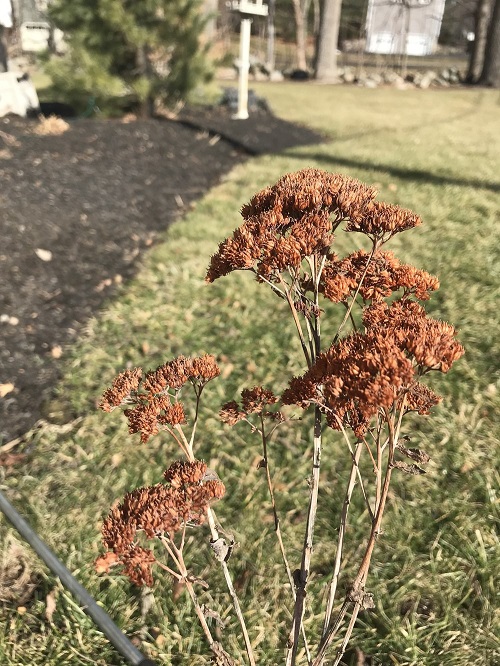
This can occur due to a variety of reasons including water stress, too much sun, or poor soil drainage. To remedy this, it is important to ensure that the soil is well-draining and that the plant is not getting too much sun.
It is also important to water the plant regularly. If the browning persists, it could be caused by fungal diseases or insects, which can be treated with fungicides or insecticides.
2. Wilted Foliage and Stunted Growth
This can be caused by too much or too little sunlight, or by too much or too little water. It is important to ensure that the plant is getting the right balance of sun and water to ensure that the foliage is healthy.
If the problem persists, it could be caused by a nutrient deficiency, which can be remedied by fertilizing the plant with a balanced fertilizer.
Is Autumn Joy Sedum Deer Resistant?
Autumn Joy Sedum is classified as being deer-resistant, however, no plant is completely deer-proof. If deer populations are particularly high in your area, you may still have to take additional steps to protect your plants. This might include using deer repellents and fencing around the area.
Best Autumn Joy Sedum Varieties
Autumn Joy is the most popular variety, with deep green leaves and bright, long-lasting blossoms in shades of pink and magenta. Matrona is a newer variety, with deep purple foliage and light pink flowers. Autumn Charm has a more upright habit, with clusters of white and pink flowers in the late summer and early fall.
All varieties of Autumn Joy Sedum are known for their drought tolerance and ability to thrive in poor soil, making them an excellent choice for a low-maintenance garden. They are also attractive to pollinators, making them a great addition to a wildlife-friendly garden.
Autumn Joy Sedum Uses for Landscaping
Autumn Joy Sedum is a popular landscaping choice for its hardy nature and stunning colors.
- Its deep green leaves turn shades of copper, pink, and purple as fall approaches, adding a beautiful splash of color to the garden.
- Autumn Joy Sedum also produces long-lasting clusters of pink flowers in late summer, which can be enjoyed well into autumn.
- It can be used as a ground cover, planted along pathways, or in containers.
- Planting it in rock gardens or along a wall can showcase its full beauty and provide a dramatic backdrop to other plants in the garden.


